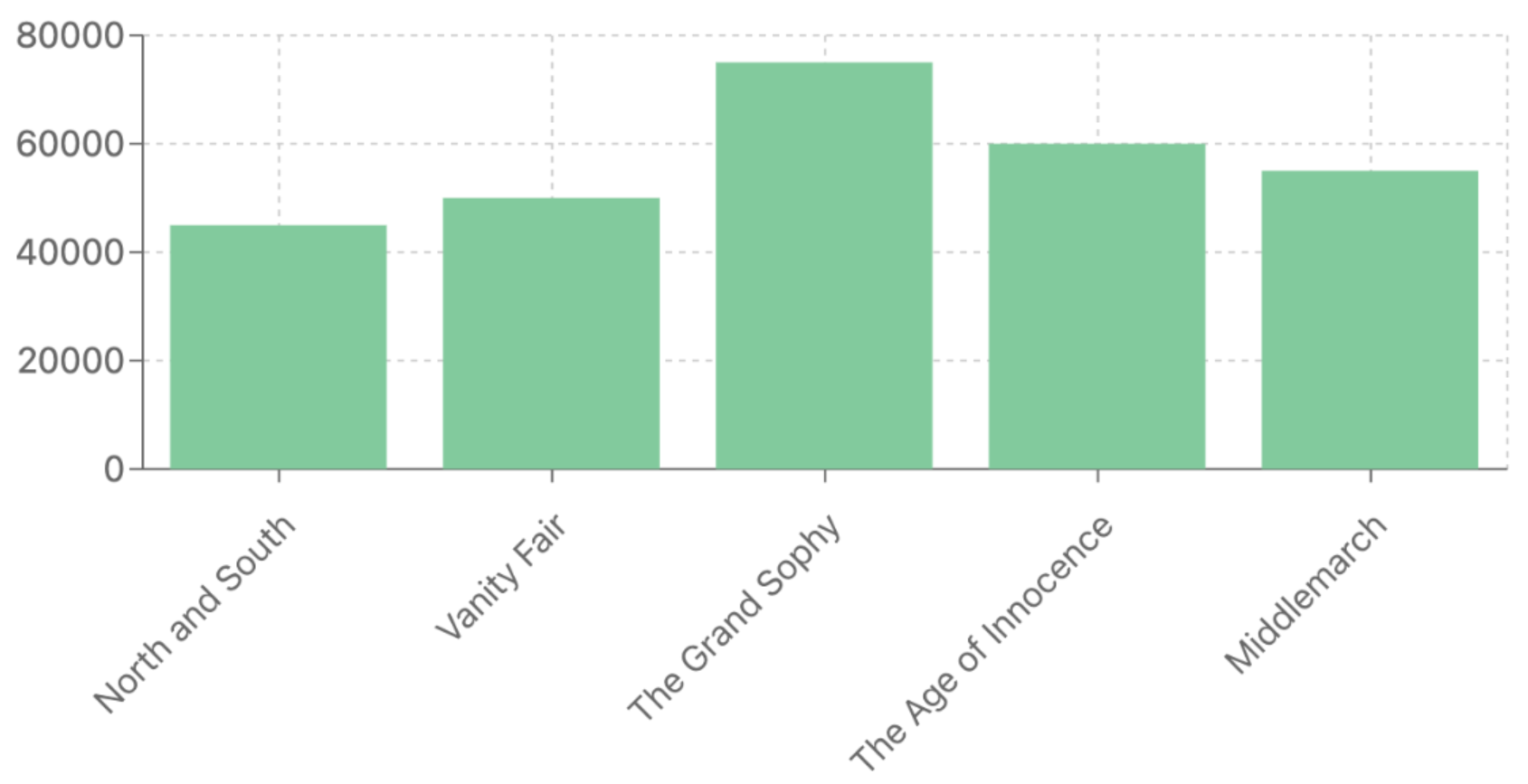

Editorial Snapshot

"Emma meets A Tale of Two Cities"
The story follows a woman caught between traditional society and industrial change as she falls in love with a mill owner while dealing with workers' rights and class differences.

"The social climbing of Great Expectations meets the wit of The School for Scandal"
This novel tracks two women through Napoleonic-era London, showing how they use marriage, money, and manipulation to move up in society.

"Much Ado About Nothing meets Jane Eyre, but in the Regency era"
A sharp-tongued woman arrives at her cousin's house and fixes everyone's problems while arguing with a rigid man who eventually falls in love with her.

"For fans of Madame Bovary and The House of Mirth"
In 1870s New York, a man must choose between the perfect society wife and the scandalous woman he loves, showing how social rules can trap people

"The romantic entanglements of The Vicar of Wakefield with the social commentary of Tom Jones"
The story follows several couples in a small town as they deal with marriage choices, money problems, and changing times.
Estimated annual sales of comparable titles.

Profile of specific group of consumers most likely to purchase the book. This is the primary demographic that marketing efforts should focus on reaching, as they are most likely to engage with and buy the product.
Demographic Details